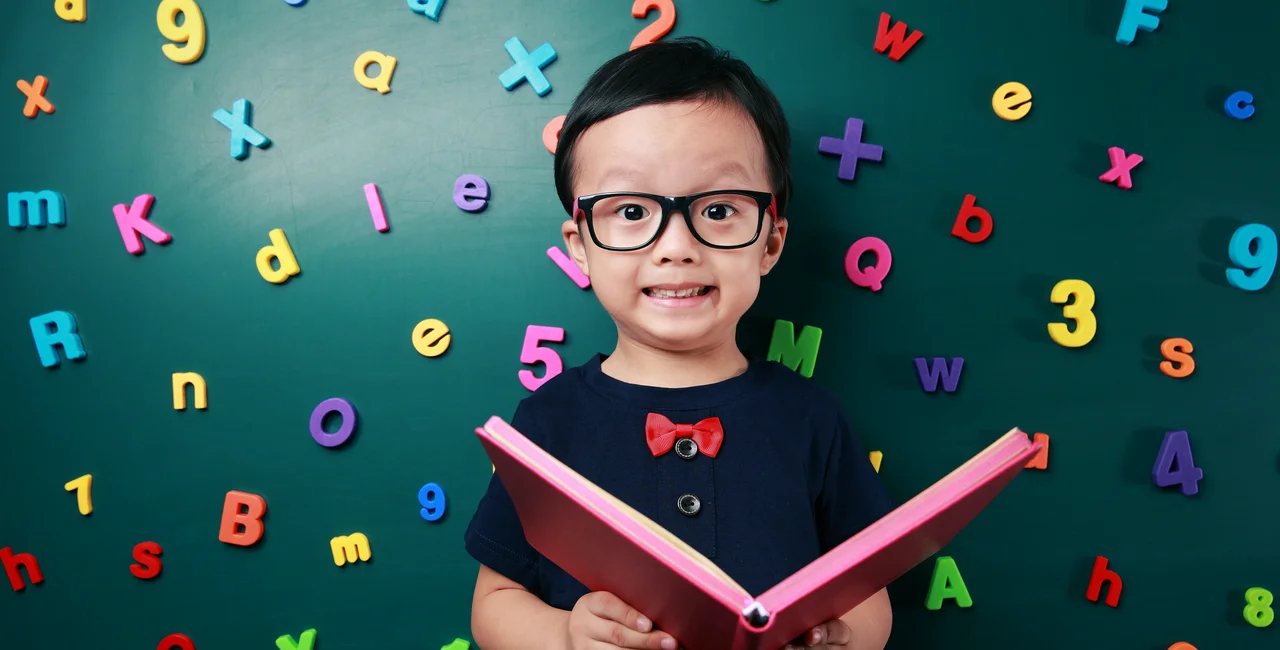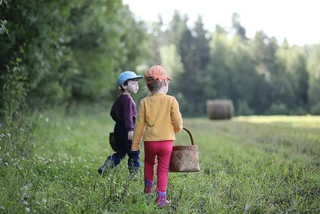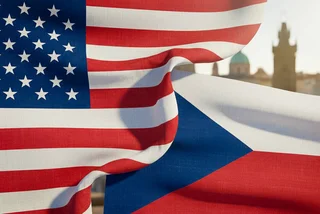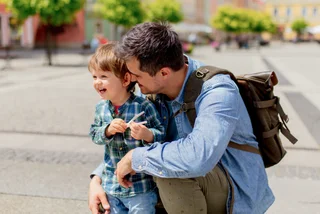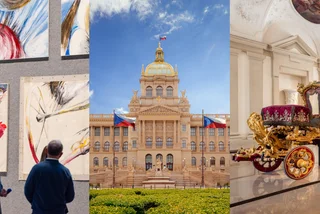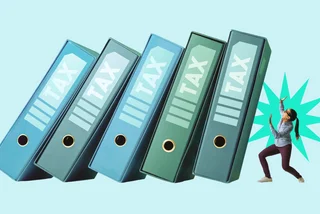Although many official resources exist to support non-Czech families with students in the public school system, realistically, a translator can’t come with you everywhere. It can be practical (and perhaps fun) to have a grasp of basic Czech school vocabulary.
Plus, when your child calls out, “Hey, Dad what time are you going to pick me up from družina today?” it’s nice to know how to respond. (Tip: Your possibilities likely range from 3 p.m.-6 p.m. depending on your child’s after-school program’s operating hours.)
Let’s take a closer look at commonly used school terms, and unravel a bit of the mystery surrounding Czech public education. Who says school children are the only ones getting an education?
Who’s who at Czech school?
Asistent pedagoga (teaching assistant)
A teaching assistant can be assigned to a particular student or can be hired to assist the head teacher and the class as a whole. Assistants can be excellent resources for parents who need linguistic help.
Profesor/ka (high school teacher/professor)
A teacher at a gymnasium or high school is usually respectfully referred to as Pan profesor (Mr. Professor) or Paní profesorka (Mrs. Professor) regardless of the degree earned. University professors who have actually earned the title with their degree are also called Profesor and have Prof. as a title in front of their name.
Ředitel/ka (school director)
The school’s director holds the school’s highest managerial position.
Třída (classroom/class)
The word třída refers to both the physical classroom as well as the class group as a whole, as in první třída (first grade).
Třídní učitel/ka (classroom teacher)
For younger students, the classroom teacher instructs students in all (or nearly all) subjects. For upper grades, the classroom teacher teaches students certain subjects and also functions as a homeroom teacher who keeps track of a student’s attendance and communicates with parents about the class schedule, trips, and school events.
Učitel/ka (teacher)
A teacher is usually addressed directly using the title, “Mr. Teacher,” or “Mrs. Teacher,” as in, Dobrý den, pane učiteli or Dobrý den, paní učitelko.
Žák (student in žákladní škola (lower / upper elementary school)
An elementary school student can be called žák (masculine), žákyně (feminine), or in plural form žáci. Once students enter secondary school, they are referred to as student, studentka, or in plural studenti/studentky.
Everyday school words
Abeceda (the alphabet)
The Czech alphabet has 42 letters, which includes the 26 letters of the English alphabet as well as the letters, á, č, ď, é, ě, í, ň, ó, ř, š, ť, ú, ů, ý, ž. Czech is a phonetic language and students learn to read in 1st grade.
Den otevřených dveří (open door day)
Many schools host days when prospective students and their parents can visit the school, attend a lesson or speak with current students. Although Covid drove many of these events online, check your school’s website for visiting opportunities.
Docházka (attendance)
Any absence must be written into the child’s grade book (along with the date, the reason for absence, and parental signature) in the section marked omluvný list (for excused absences). Parents are responsible for notifying the teacher the morning of the absence or in advance.
Did you know? Unlike in other EU countries, in Czechia, parents are allowed to excuse their child for family trips or other extended absences. Check with your school to find the exact regulations. Absences beyond five days typically need a School Director’s approval.
Domácí příprava (at home preparation)
Parents are expected to help younger students with their homework and overall school preparation. An easy tip to keep your child’s teacher happy: make sure your child packs the correct books for the following day’s lessons in their backpack.
Domácí úkol/DÚ (homework)
Homework depends on your child’s teacher. Some teachers give it; others don’t. When an older student is absent, teachers generally count on the student to contact classmates for the assignments missed. Some teachers maintain blogs where weekly homework assignments could be listed.
Oběd (lunch)
Enrollment forms for the school lunch program are provided at the beginning of the year. Students are not required to eat at school; they may go home to eat. Lunches include polévka (soup) and hlavní chod (main course). They can usually be selected
Odpolední vyučování/odpoledka (afternoon lesson)
A lesson which is taught after lunch, sometimes with a free gap hour beforehand. Usually for students in the upper grades.
Omluvenka (a written excuse for an absence)
When a student leaves early/arrives late to school (i.e. dental appointment, sports match), he or she must present a written excuse. Some schools offer printable templates for written excuses on their websites. This absence should also be written in a student’s grade book.
Pololetí (half term)
The Czech school year is divided into první/druhé pololetí (first/second semesters). The first half of the school year runs from Sept. 1 through Jan. 31. Report cards are issued at the end of the half term and at the end of the year.
Přestávka (break)
Between each 45-minute class, there is typically a 5-10 minute break. One longer 15-20 minute break gives students a chance to eat their snack or go outside to the school playground.
Prázdniny (holiday)
In addition to the Hlavní prázdniny (Summer holiday), the school system has annual Podzimní prázdniny (Autumn holiday), Jarní prázdniny (Spring holiday) and Vánoční prázdniny (Winter holiday) as well as Pololetní prázdniny (Half term) and Velikonoční prázdniny (Easter break). Schools also observe public holidays. For a more detailed School Calendar, see our recent article with important dates in the Czech school year for 2022-2023.
Sdružení rodičů a přátel (SRPŠ) & příspěvek rodičů (parents organization & contribution fund)
Many schools have a non-partisan parental organization that collects money to finance various school activities that extend beyond the school’s regular budget. Each class generally nominates one parent representative to the board who presents a finance report at regular parent meetings.
Ranní/odpolední školní družina (before/after school care)
In the lower grades, schools offer before/after school care. This program is not mandatory and is paid for by parents. Enrollment information (operational hours, capacity, age of students, prices) is presented during the first week of school or on the school’s website.
Ředitelské volno (director’s free day)
A holiday given by a particular school at the discretion of the school’s director. These limited “free” days may precede or follow public Czech holidays or can be used during spring entrance exams.
Rozvrh hodin (schedule)
At the beginning of the year, each class receives a schedule that shows how many lessons and which subjects will be on certain days. Younger students have 4-5 lessons per day while older students can have between 6-9 lessons. Each lesson is 45 minutes long followed by a break.
Svačina (snack)
Food and drink brought from home to be eaten in the longer break between lessons.
Šatna (locker room)
The locker room is usually the first room students enter, and it is where they leave their coats and exchange their outdoor shoes for school slippers.
Školní klub (school club)
This is a version of after school care offered for students in the upper grades of elementary school.
Śkolní výlet/školní exkurze (school trip/excursion)
Field trips and cultural excursions are an integral part of Czech public school education, and it is quite common to see teachers taking their students to visit museums, attend courses at traffic safety playgrounds or visit the theatre. Permission slips are generally required.
Škola v přírodě/ŠVP (school in nature)
Czech students also engage in school in nature trips which are led by their classroom teacher and occasionally by hired instructors. School in nature trips are often one-week-long ventures into nature, where students sleep in cottages or cabins and explore areas of Czech cultural interest.
Školní řád (school rules)
Rules presented at the beginning of the school year that students are expected to follow. Consequences for repeated breaking the school or classroom rules can result in the following disciplinary actions, which are usually recorded in the student’s grade book.
- napomenutí – warning
- třídní důtka – reprimand from the classroom teacher
- ředitelská důtka – reprimand from the school principal
- vyloučení ze studia – expulsion from the course of study (is only possible once the 9-year compulsory education has been completed)
Třídní fond (class fund)
The money gathered at the beginning of the year to cover class expenses, ranging from additional art supplies to field trips and school events. Unlike the SRPŠ, a class fund is managed by the teacher.
Třídní schůzka (meeting of parents with the teachers)
Parents’ meetings held at the beginning of the school year and at regular intervals during the year to discuss school events, such as class trips or projects. Attendance is required (or parents are expected to make other arrangements to meet with the teacher). These meetings are a great way to meet other parents as well as ask general questions about the school and how it works.
Vyučovací hodina (teaching lesson/class)
Each lesson is informally called hodina (literally, “hour”), even though it is only 45 minutes long.
Zájmové kroužky (after school club activities)
Each school offers interest groups, sports activities, and academic tutoring (potentially even courses in Czech for foreigners) in the afternoon hours. Sometimes, these programs are taught directly by a school employee; often they are offered under contract with a third-party organization. Parents receive information about the offerings available at the beginning of each school year.
Žákovská knížka (student’s grade book)
A student’s grades and attendance are recorded here as well as important school news, information about holidays, and changes to the regular school schedule. In recent years, more schools have adopted an electronic form, elektronická žákovská knížka, often in the application, Bakaláři.
Making the grade
Chování (behaviour)
On half-term and end-of-year report cards, students are evaluated for behavior on a scale from 1-3.
- 1 – velmi dobré (excellent)
- 2 – uspokojivé (satisfactory)
- 3 – neuspokojivé (unsatisfactory)
Klasifikace (evaluation)
Students are evaluated numerically and verbally based on a set of criteria that is established by the individual school or teacher.
Slovní hodnocení (written evaluation)
In addition to numeric grades, students receive a written evaluation at certain intervals in the school year, depending on the school. These written evaluations point out areas of progress as well as areas that need improvement.
Vysvědčení (report card)
The report card is issued twice a year at half term and at the end of the year. Grades are marked from 1 (best) to 5 (worst). Some schools use written expressions instead of numbered grades to measure a student’s progress.
Známky (grades)
Typically marked from 1 to 5. Often recorded in a student’s grade book or electronic grade book.
School supplies
Bačkory (slippers/indoor shoes)
Traditionally, students (and teachers) are required to switch from their street shoes to indoor shoes which can range from clean sneakers to closed-toe, Croc-style shoes. Regardless of the style, the indoor shoes are typically worn with socks.
Batoh (backpack)
School children’s backpacks (also called aktovka) are often criticized by Czech parents for being too heavy. However, many schools have in-classroom cubbies where students store their art supplies and can leave textbooks they don’t need to bring home every day.
Papírnictví (stationery shop)
Although hypermarkets like Tesco and Globus sell school supplies, often a local papírnictví is the best resource if you are uncertain exactly what you need. As long as you are prepared to wait for your turn, shop assistants will assist you in finding odd-sized sešity (notebooks), obaly (plastic textbook covers), and untranslatable výtvarné potřeby (art supplies).
Penál (pencil case)
In addition to tužka (pencil) and pero (pen), a well-stocked pencil case usually contains guma (an eraser), pastelky (colored pencils), fixy (markers), pravítko (a ruler), nůžky (scissors) and lepidlo (glue). First graders are not allowed to write with a pen until they master writing with a pencil first.
Pracovní sešity (workbooks)
Although textbooks are purchased by the school, parents are required to pay for the accompanying workbooks. Some schools purchase additional learning materials directly and ask parents to reimburse the cost. Others send detailed supply lists home for parents to purchase individually.
Učebnice (textbooks)
School textbooks are chosen by each individual teacher and are generally assigned at the beginning of the year and returned at the end of the year. Parents do not pay for these textbooks; however, they must be returned in good condition to avoid a fine.
Skříňka (locker)
Each student has a locker where indoor shoes, outdoor coats, and gym clothes can be kept. Some classrooms have additional cubbies for gym clothes and art supplies.
Obuv do tělocvičny (gym shoes)
Students are required to have a change of gym clothes and clean gym shoes for indoor physical educational classes.
Stages of education (in chronological order)
Mateřská škola (preschool)
Public preschool education is available (although not mandatory) from the age of 3. Attendance is high and registration priority is given to children who live in the school’s catchment. Since 2017, the předškolní rok, which is considered the calendar year that the child turns 5 before the start of school, is obligatory. The předškolní rok readies children for the 1st grade and helps identify gaps in learning prior to official school entrance; however, there is no standard curriculum.
Zápis (school registration)
Each spring, Czech public preschools and schools hold an official registration day, where prospective students enroll for the upcoming school year. Registration is required for entrance to preschool and first grade (from age 6) as well as to some upper-level elementary schools (from 6th grade).
Odklad (delayed school entry)
Children who have not yet demonstrated physical or mental readiness for school by age 6 may apply for a delayed school entry by one year. This request can be submitted on registration day and is usually accompanied by a recommendation from a pedagogical/psychological center.
Přípravná třída (preparatory class)
The preparatory class is a newer initiative at some public schools that allows children from age 5 to receive more concentrated help learning the Czech language and adapting to the Czech school culture before entering the 1st grade. It is also appropriate for students with odklad.
Základní škola (elementary school)
The elementary school system is divided into two levels první stupeň (grades 1-5) and druhý stupeň (grades 6-9). These 9 years comprise základní vzdělání or compulsory education in Czechia. After completion of the first stage (5th grade), students either continue to druhý stupeň or take placement tests for 8-year gymnasiums to complete their compulsory education.
Základní umělecká škola (ZUŠ) is an extracurricular arts school that functions as part of the state school system and offers after-school courses in arts, music, and drama. Tuition is paid by parents; however, course prices are generally lower than for private art instruction.
Přijímací zkoušky (entrance exams)
Entrance exams held each spring to assess a student’s readiness for study at an 8, 6, or 4-year Czech gymnasium, an arts conservatory, or a 4-year specialized secondary school. Conservatories, specialized art schools, and sports gymnasiums have extra talentové zkoušky (talent tests), too.
Střední škola (secondary education)
In Czechia, secondary education can take many different forms. Here are a few of the most common types of secondary schools.
Gymnázium – an 8, 6, or 4-year school that provides general education in preparation for further study at a university or higher professional institution. Upon leaving these schools, students sit for the maturitní zkouška.
Střední odborná škola (SOŠ) – a 4-year secondary technical school that prepares students for highly skilled jobs in many fields. Students also sit for the maturitní zkouška.
Střední odborné učiliště (SOU) – a 3 or 4-year secondary vocational/practical school that prepares students for specific industry jobs and may not require students to sit for the maturitní zkouška.
Konzervatoř – highly specialized art secondary school that offers general and vocational education in music, dance, singing, and drama. Students sit for the maturitní zkouška.
Maturitní zkouška – the Maturita exam is the standard leaving qualification from 4-year secondary schools, 6 and 8-year gymnasiums, and conservatories. It is comprised of a series of oral and written
evaluations on various subjects. Receiving a Maturita Certificate is a requirement for entrance to higher institutions.
Vysoká škola – a university or higher institution that provides education in three study programs: Bachelor's, Master's, and Doctoral (Entrance requirement Maturita Certificate and entrance exam).
Vyšší odborná škola – higher institutions for skilled professions (Entrance requirement Maturity Certificate).
If this all still seems a little overwhelming, be on the lookout for an upcoming article featuring non-profit organizations that help non-Czech families integrate into the Czech school system.












 Reading time: 13 minutes
Reading time: 13 minutes 